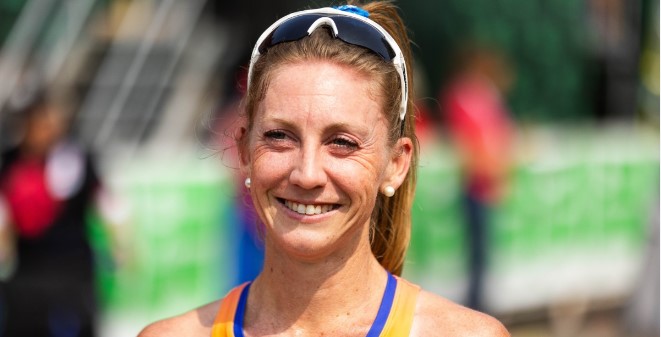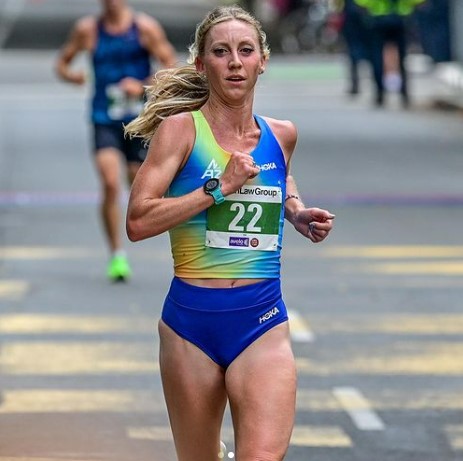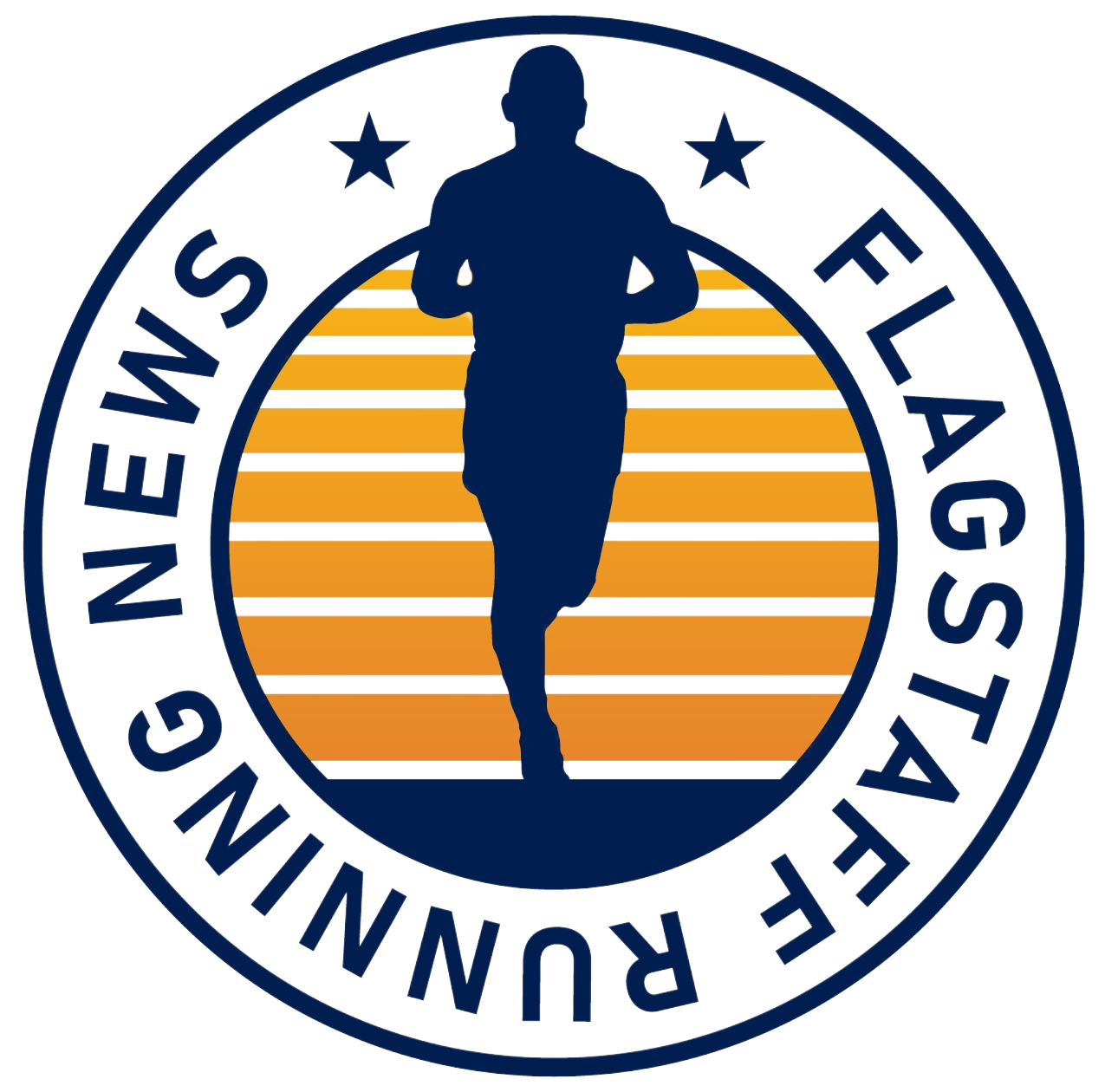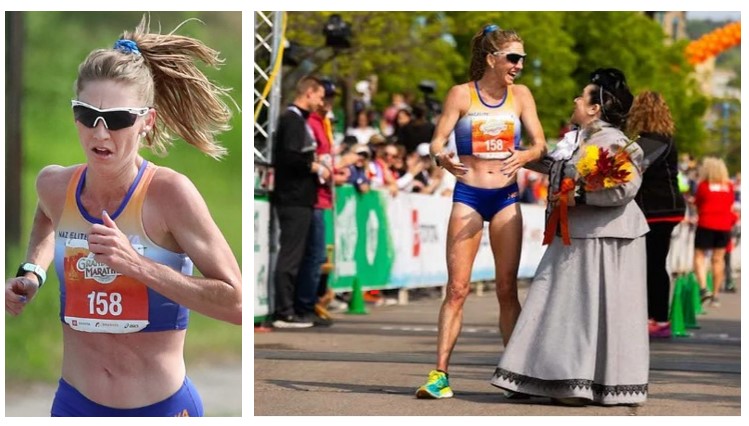On Instagram the other day, Lauren Hagans made a post to which many a marathoner, elite and recreational alike, could relate.
Underneath a video clip of the Hoka NAZ Elite runner crushing a long workout on Lake Mary Road, Hagans oozed positivity in her post about her build up for Sunday’s Chicago Marathon. But then she added this:
Bubble wrap me!!
Those familiar with Hagans’ career, especially recently, would nod knowingly. For every great race Hagans has run over the years, first on the track as a middle-distance and 5,000 meter runner and now as a marathoner, there have been setbacks to due injuries.
Now, dealing with injuries, the physical and psychological toll, is part of the life of a professional runner. But it seems, for Hagans, injuries always seem to hit at the most inopportune time. Sometimes she has persevered and sometimes not.
Hagans, unfortunately, has had a litany of ills.
Back in 2021, prepping for the Olympic Trials 5,000, she dealt with a hamstring injury that curtailed her training. She finished seventh in that race but felt she had a real shot at making the team if not for the setback. In 2023, late in what otherwise was a fabulous build for her marathon debut at Grandma’s in Duluth, Minn., she tweaked her calf. Though she still felt the strain during the race, she gutted it out and won the race, beating Dakotah Lindwurm, who would later make the Olympic Marathon team.
Early 2024, prepping for the Trials, Hagans dealt with nagging and recurring sciatica pain, an albatross for her through her career. She was eventually diagnosed with Psoas Syndrome – chronic irritation to the deep muscle in the abdomen that connects with the hip – and worked as hard, maybe harder, at rehabbing both the psoas and sciatica as she did training for the marathon. Alas, Hagans was forced to drop out before the 10-mile mark in Orlando.
Returning to Flagstaff, she said she changed her body work and rehab/prehab protocol and felt healthy for a summer of road racing leading to the fall marathon in Chicago.
Bad luck struck once more, though, this time freakishly.
Hagans was on a routine training run with some NAZ Elite folks, hanging with teammate Kellyn Taylor, on the smooth and forgiving surface of the FUTS, when in an instant she was on the ground. She rolls her eyes in annoyance with the running gods when asked to recount how she rolled her ankle that day.
“I rolled my ankle on a pine cone,” she said, laughing at the absurdity. “It took literally two months to (heal). It was all these different little problems stemming from it. I pulled out of five different races because I wasn’t able to train consistently. I was with Kellyn and someone (in the pack) had kicked a pine cone. I heard that whiz of something being kicked and all of a sudden, I’m on the ground. It was so painful. It was super frustrating. I had to start over from scratch.”
Now, though, Hagans is happy to report that her slow, deliberate 12-week build for Chicago has gone well – caveat: there still a six days to go to the start – and without any incidents. No minor irritations. No major sciatica flareups. All pine cones have been deftly avoided.

So maybe now, on the streets of Chicago, a healthy and fit Hagans can show the promise that she exhibited in beating Lindwurm last year in 2:25:56 for an impressive debut.
Hagans may be 38 and veteran of several U.S. Olympic Trials on the track, but she’s a relative newcomer in the marathon. And, frankly, she’s as curious as anyone to see how well she runs.
“This build has been better than Grandma’s,” she said. “My paces have been much faster.”
Goals?
“I have what shape I’m in, and if I can live up to where I’m at, that’ll be good,” she said. When pressed, she added: “It’s reasonable to be 2:23 to 2:24. I heard that they are only having a 2:20 and a 2:24 pacer, and I would absolutely go to the 2:24 pacer because I don’t want to start out too hot.
“Things are in a better spot for me. For Grandma’s, my tempos were 5:45 to 5:50. All of my times are 5:37 to 5:40 for this one. That’s a huge jump for me.”
It says much about Hagans’ determined attitude that she’s been able to deal with a series of setbacks and emerge stronger.
“It’s been a year of injuries,” she acknowledged. “But I’ve had injuries my whole career. It’s super annoying, and I get a little pouty sometimes, but I know that on the other side of it my talent and work ethic doesn’t go away. It sucks, but when you start seeing some daylight, you know it’s still there. I will admit that after the (marathon) trials, it was hard.”
By far the most serious and lingering injury has been her sciatica flareups, which reared its head during the marathon trials build up. Hagans, who herself has degrees in exercise physiology and exercise psychology, consulted many experts and found new practitioners in Flagstaff that not only have tamed the sciatica but found a hidden cause: the psoas.
“Basically,” Hagans explained, “your psoas is a stabilizer and wraps all the way around to your spine to your pelvis. And mine got activated and so tight that it was causing my pelvis to tilt too far forward, which was causing my back to arch so much that I got some bulging disks. And I also had some sciatica at the same time, but it was like a weird feeling. In tempos or a long run, really any time that I ran for a long time, I would almost start to feel a sensation where I was losing motor control of my legs. Instead of a strong stride, it was like my legs were spinning and couldn’t get traction. I could see in pictures and videos that I was sitting back. I wouldn’t be all the time. Some runs were fine, others I couldn’t control it.”

There apparently were enough “fine” runs mixed in with the stride-affected run that Hagans decided to give the Olympic marathon Trials a shot.
“I ran in the Trials thinking, maybe it’ll be a good day,” she said. “But by the time I got there, I was so exhausted from being in pain and managing it that it wasn’t a good day.”
In the wake of having to DNF in Orlando, Hagans took five weeks off from running and tried to figure out how to avoid future flareups. She turned to a local massage therapist, Michael Harrison, who centered on the psoas.
“He’s really worked on calming my psoas down,” Hagans said. “Have you ever had psoas work done? It’s supper, super painful.”
She pointed her hands to a spot just on the inside of her hip.
“They press down and palpate, hard,” she said, laughing. “It feels like they are pressing into your spine through your stomach and you have to move with it. Ugh! For the chronic sciatica, I worked with this woman (in Flagstaff) named Katie Klein for a few years and that’s more a relaxation massage to calm the nervous system. I do that every few weeks.”
Now that the injury situation is presumably behind her, Hagans can entirely focus on the race itself. She is a latecomer to the marathon, and her long track background in the 800, 1,500 and 5,000 made the transition difficult in some respects and easy in some respects.
Difficult because, well, she’s running 26 miles on the street, not a few laps around a track. Easy because Hagans’ track background gives her built-in speed that longtime marathoners may have lost, which can help near the end of a long race.
Mostly, though, the mental aspect of being a marathon has taken some work.
“The biggest adjustment was wrapping your head around (the distance),” she said. “From the 800 and mile, the (marathon) pace is so much slower. I have that middle distance background and pace just ingrained into me. I can go to the track and rip out sub-30 second 200s like I’m asleep. It’s just ingrained in my body. If I could handle the aerobic component of the marathon, which I’ve developed the last two years, those marathon paces just don’t feel that hard. Even, like, steady states of Lake Mary. Yes, it’s hard, but it’s like running 5:35 pace versus 4:30 pace; it’s just different.
“I tell a lot of track runners this when they ask why I’ve (moved up in distance), I say there are a lot of people who could be good at (marathoning) as long as you could wrap your brain around it. Instead of being on the track for two minutes, you’re out there for two and a half hours. It’s just a matter of focusing that long and having the mental ability to get you over the finish line.”
Hagans showed impressive toughness, and patience, at her marathon debut in Duluth. She had only an eight-week build up to the race and her highest weekly mileage was 85. Three weeks out, she had a skip a couple of workouts because of the calf irritation. Her calf felt fine on the starting line that day, but it announced itself about three miles in.
“I kind of decided at the time that, OK, it was painful but more annoying than anything else,” she said. “I told myself, ‘Focus on all the other muscles in your body that are doing great.’”
That worked, and another mental strategy she employed was to not overthink the race, especially in her debut.
“When you are about to do something you’ve never done before, you’ve never been to those places mentally or physically,” Hagans said. “I like to approach it with a sense of curiosity rather than getting super fearful and thinking, ‘Oh, this might not go well.’ I was like, ‘Let’s just see how it goes.’
“I had a really interesting experience on the day of Grandma’s. I was really nervous for a couple weeks leading up to the race. Because, in the marathon, if it doesn’t go well, it’s not as if you can go do another one in a week. But race morning, I woke up calm and put all that in the back of my mind and decided, just do what you did in practice, click off the miles.”
Hagans said she didn’t expect to beat Lindwurm in her debut. After all, Lindwurm was Grandma’s defending champion and was racing in her home state, and Hagans was embarking into unknown territory. Whereas Lindwurm went out fast, Hagans ran conservatively; she said she couldn’t even see Lindwurm out ahead of her early on.
She fell into a chase pack of a half dozen runners, and Hagans kept moving up as the race progressed. After the 16-mile mark, Lindwurm was in her sights.
“I was thinking, ‘Oh, this is Dakatoh, she’s run so many and this is her race. She’ll be fine.,’” Hagans recalls. “But I noticed I was catching up to her and caught her at mile 21. I had a second where I had to make a decision. I sat behind her for a couple of minutes but I was starting to slow down because she was slowing down and I felt I needed to go because it was upsetting my rhythm. So I went.”
And she never looked back. As Hagans was finishing up, having put a full minute on Lindwurm, Olympian Kara Goucher, who was doing the TV race commentary, said of Hagans’ debut: “She was born to be a marathoner; she just didn’t know it yet.”
Hagans said she’s not sure she agrees with that assessment – after all, she had a fine pro middle-distance career – but she thanked Goucher for the compliment. In her heart, Hagans still sees herself as track-focused, first, even if those days are behind her.
“In my head,” she said, “when I get to the end of a marathon, I still think I’m an 800 runner. I think, ‘No one can catch me in the last mile. Marathon paces don’t feel as bad to me; it’s just that my legs get tired.”
She seems to have embraced the marathon, though, and has high hopes for Chicago. She said she plans to explore the half marathon afterward, but eventually get back to the marathon distance.
“It’s weird,” she said. “I’m a pretty experienced runner, but I’m still new to this particular distance. To me, that’s exciting.”


Leave a Reply